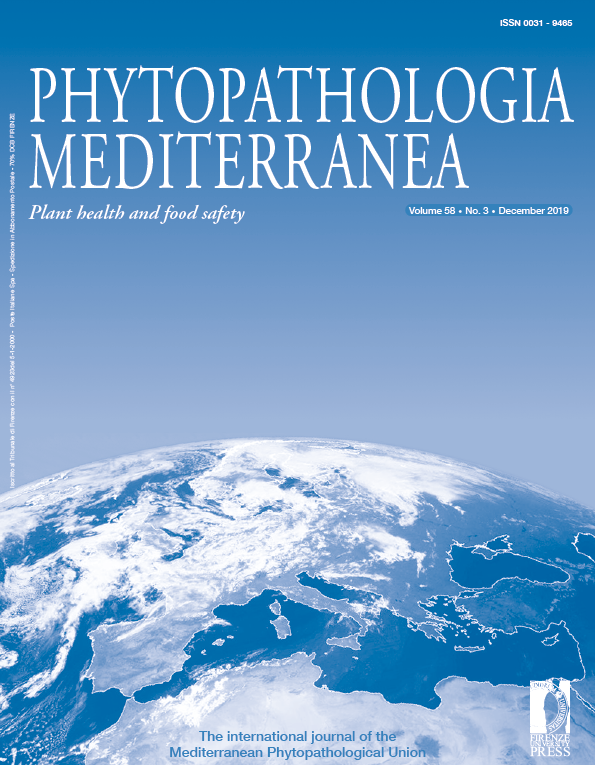Published 2019-12-30
Keywords
- Fusarium graminearum,
- Triticum aestivum,
- Triticum durum,
- spray inoculation,
- point inoculation
How to Cite
Abstract
Fusarium head blight (FHB) is one of the most important fungal diseases of cereals, and Fusarium graminearum is the most damaging FHB pathogen. infection is linked to host anthesis, and symptoms include necrosis, bleaching of heads and shrivelled kernels. No fully effective fungicides are available for FHB control, so utilization of other mitigation measures, such as the use of resistant cultivars, is necessary for FHB management. Resistance to FHB is quantitative and multigenic and five components of resistance (Type I, II, III, IV and V) have been described. The main problem in testing for FHB resistance is reproducibility, so necessary tools for breeding resistant cultivars are reliable inoculation methods and the testing for different FHB-associated characteristics. We screened three Italian wheat genotypes, ‘Palesio’, ‘Claudio’ and ‘Marco Aurelio’, for Type I, Type II, and, in part, for Type V resistances, with both phenotypic (% of disease incidence and severity, thousand kernel weight (TKW) and molecular (quantification of fungal biomass with Real-Time qPCR) approaches, using spray and point inoculation protocols. Results underlined that ‘Palesio’ bread wheat showed Type I tolerance to initial infection, and ‘Marco Aurelio’ durum wheat showed an important Type II resistance to disease spread when spray-inoculated (27% disease severity). Quantification of fungal biomass showed that differentiation among the three wheat cultivars was best visualized when spray inoculation was used. TKW data showed that % yield loss was greater after point inoculations, except in ‘Marco Aurelio’, which was not affected by inoculation method. This study has highlighted the complexity of testing for FHB resistance, and demonstrated the necessity to use as many resistance screening protocols as possible.






